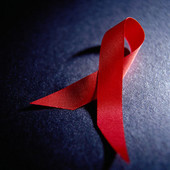Secondary school represents cost-effective intervention for HIV prevention in Botswana
THURSDAY, July 2, 2015 (HealthDay News) — Additional years of secondary schooling provide a cost-effective HIV prevention measure in Botswana, according to a study published online June 28 in The Lancet Global Health.
Jan-Walter De Neve, M.D., from the Harvard T.H. Chan School of Public Health in Boston, and colleagues obtained data for HIV biomarkers and demographics from the nationally representative household Botswana AIDS Impact Surveys from 2004 to 2008 (7,018 participants). Botswana reformed the grade structure of secondary school in 1996, expanding access to grade 10 and increasing educational attainment. The causal effect of years of schooling was assessed on the cumulative probability that an individual contracted HIV up to their age at the time of the survey. The authors also examined the cost-effectiveness of secondary schooling as an HIV prevention intervention.
The researchers found that with each additional year of secondary schooling there was an absolute reduction in the cumulative risk of HIV infection (8.1 percent; P = 0.008), relative to a baseline prevalence of 25.5 percent in the pre-reform birth cohort. In women, the effect was particularly large (11.6 percent; P = 0.046). By standard metrics, secondary school was cost-effective as an HIV prevention intervention (cost per HIV infection averted, $27,753).
“Increasing progression through secondary school could be a cost-effective HIV prevention measure in HIV-endemic settings, in addition to yielding other societal benefits,” the authors write.
Copyright © 2015 HealthDay. All rights reserved.








